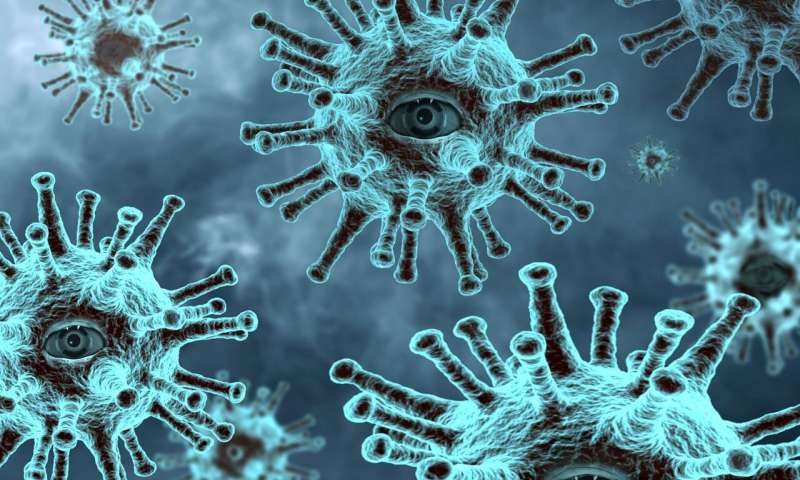Research by John P. Haran, MD, Ph.D., and Evan S. Bradley, MD, Ph.D., at UMass Chan Medical School, shows that patients with persistent long COVID symptoms have oral microbiomes with a significantly higher abundance of bacteria that induce inflammation. These findings suggest an association between the oral microbiome and long COVID that may point to dysfunction in the oral microbiome as a contributor to long COVID.
“We don’t understand the mechanism of long COVID. Nobody knows how or why it happens,” said Dr. Haran, associate professor of emergency medicine and microbiology & physiological systems and clinical director of the Center for Microbiome Research at UMass Chan. “There are suggestions that the innate immune system may be overstimulated from COVID. It’s not clear why, but after SARS-CoV-2 has cleared, the immune system seems to still be active. What we found is a clear biological signal associating a change in the oral microbiome with long COVID symptoms. This suggests that the microbiome might be playing a part in long COVID and is a mechanism that deserves more study.”
Like the microbiomes found in the gut and on the skin, the oral microbiome is a collection of bacteria that can affect the progression of health and disease. Much smaller than the gut microbiome, the oral microbiome comprises a few hundred different species of bacteria. It is the first meeting place along the alimentary canal, the passage along which food passes from the mouth through the body and where the immune system meets the outside world.
It’s believed that maintaining the delicate balance of the oral microbiome can play an important part in health. An imbalance in the oral microbiome can lead to inflammation, illness and disease. Imbalances in the oral microbiome have been associated with chronic gum disease and can also impact the health of the gut microbiome.
“The microbiome in our mouths is something we live in balance with every day,” said Haran. “The innate immune system keeps it running smoothly. Disrupting this balance can impact the innate immune system and through it, health and disease. For patients suffering from long COVID symptoms, the microbiome changes to a very pro-inflammatory state.”
Study co-author Dr. Bradley, assistant professor of emergency medicine, explained that it’s not clear what the differences seen in the microbiome of long COVID patients reflect. “We believe that the oral microbiome influences how an individual’s immune system responds to COVID and so a pro-inflammatory microbiome could lead to prolonged symptoms even after the virus is cleared. It’s also possible that in some individuals, COVID drives a change in the microbiome toward a pro-inflammatory profile, which leads to prolonged symptoms.”
Only recently recognized as a diagnosis, long COVID is defined as symptoms that can’t be explained by another cause, continuing for more than 10 weeks after an acute infection of COVID has passed. The SARS-CoV-2 virus is no longer present, but patients continue to suffer from a range of ailments like headaches, extreme fatigue and changes in their memory and their thinking, as well as muscle weakness and joint pain and muscle aches.
“Something else is going on besides the SARS-CoV-2 virus and its not clear why these people are getting sick,” said Haran. “For people that have had the vaccine and subsequently get COVID, it doesn’t appear that the vaccine protects against long COVID either.”
To study the connection between long COVID and the oral microbiome, Haran and Bradley sampled 164 patients presenting in the emergency room with COVID over a nine-month period. Blood and oral swabs were taken from patients, who were also tested for COVID. Eighty-four of the 164 tested positive for COVID by PCR and were admitted to the hospital for treatment. Of these, 27 were successfully contacted for follow up at both four weeks and 10 weeks. Fourteen patients from this group experienced ongoing symptoms four weeks from disease onset and 10 patients had symptoms for longer than 10 weeks. On average, patients experienced 45.8 days of symptoms.
Haran and Bradley used whole genome sequencing and advanced algorithms to identify the composition of bacteria in the oral microbiome among patients experiencing prolonged symptoms. Of the hundreds of bacteria species identified, 19 were seen in abundance in those patients with ongoing symptomatic COVID-19 that didn’t appear in other patients.
There has been a growing concern that long COVID patients resemble patients with myalgic encephalomyelitis/chronic fatigue syndrome. These two conditions share some of the same symptoms, especially fatigue and cognitive impairment. Myalgic encephalomyelitis/chronic fatigue syndrome is a condition characterized by chronic fatigue, lasting at least six months, that impairs one’s ability to perform daily activities and typically has additional impairments in memory and concentration. This syndrome is also linked closely to chronic inflammation as the driver of these patients’ symptoms.
“There’s an association between the oral microbiome, inflammation and long COVID that we don’t understand,” said Haran. “In trying to understand, prevent and treat long COVID, this association is something that needs to be explored more thoroughly. For that, we need a larger, longitudinal study with more volunteers and more data.”
Fessenden, University of Massachusetts Medical School


